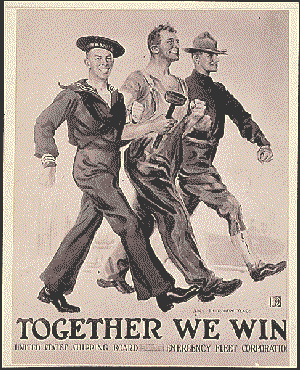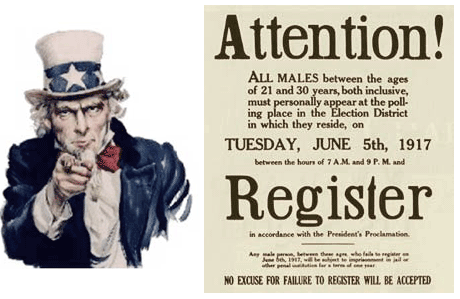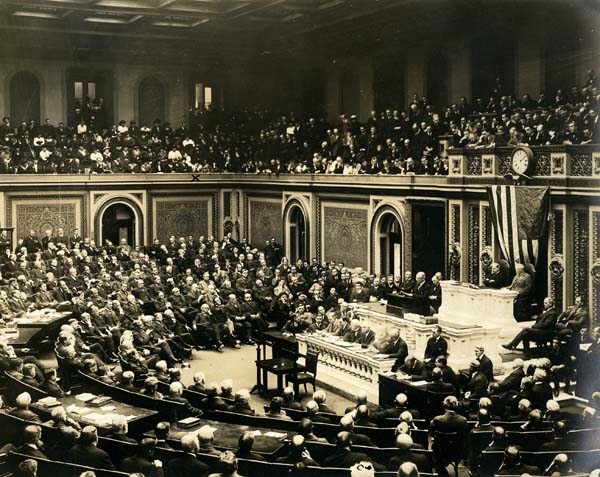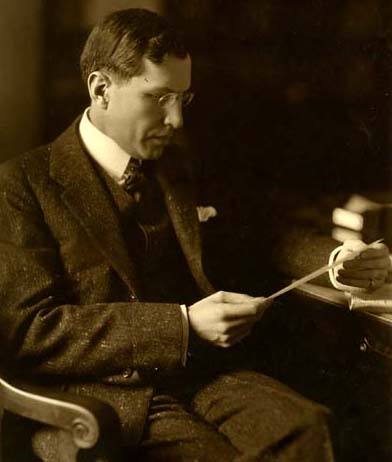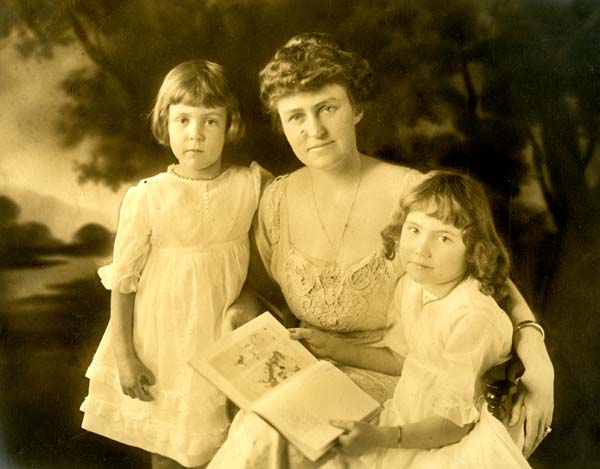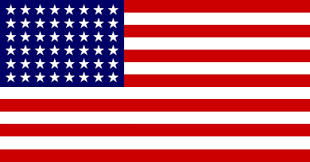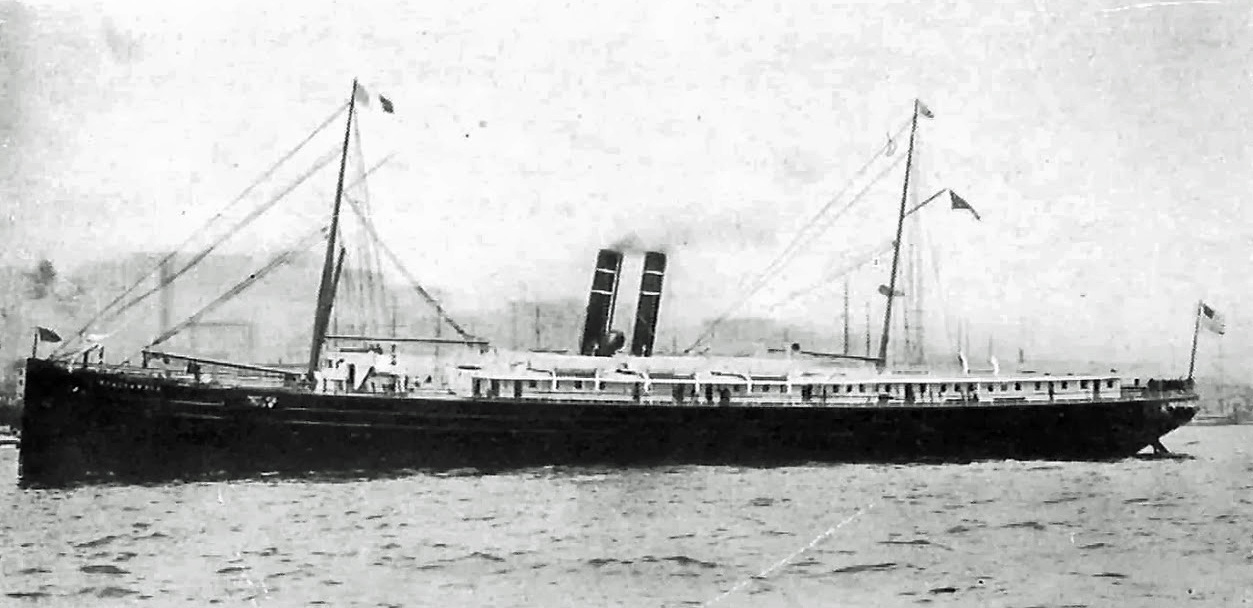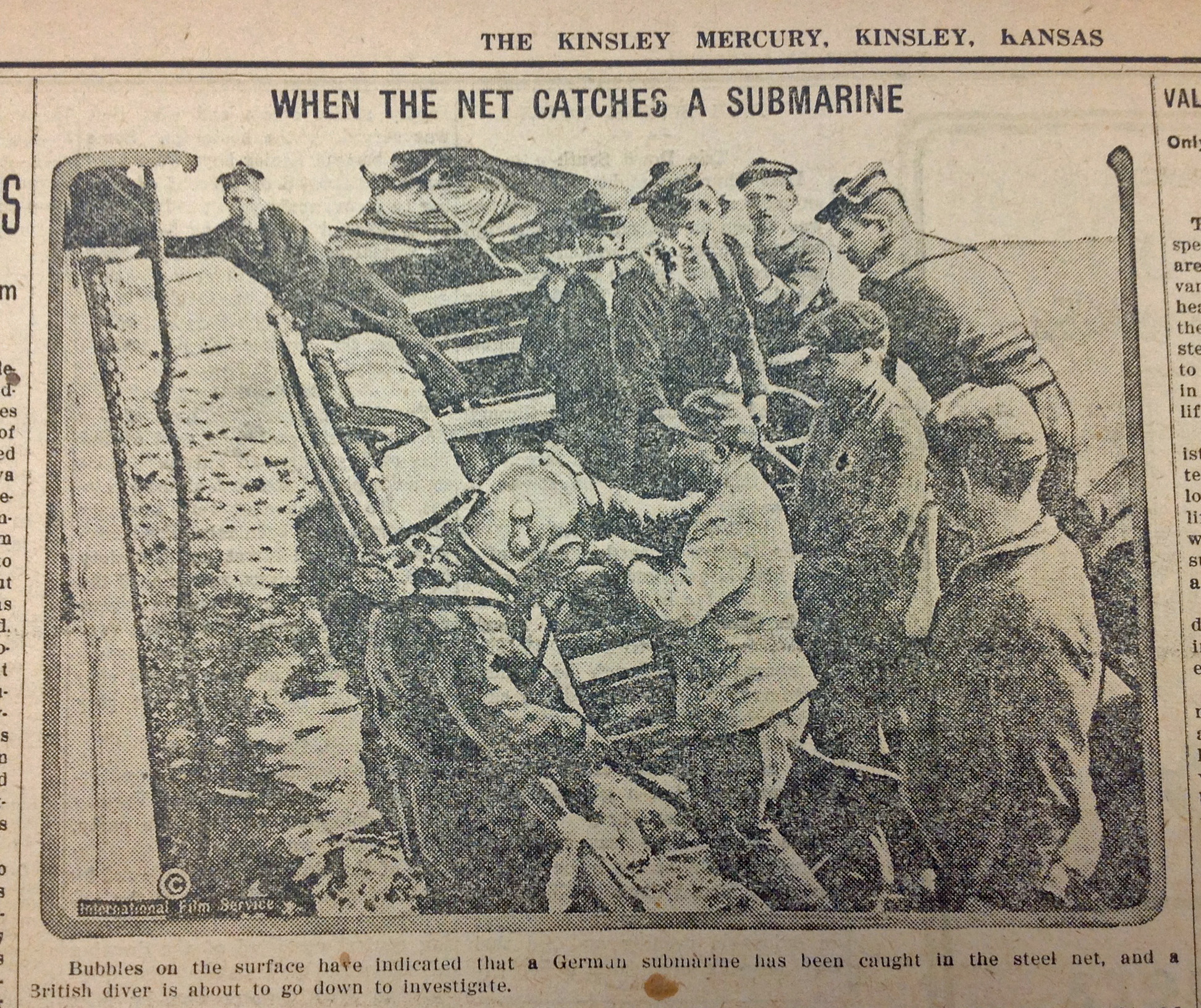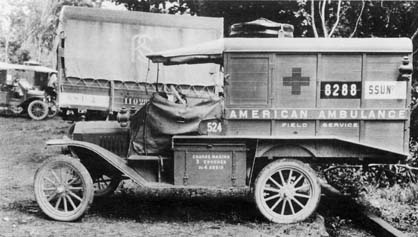A note about this blog. I will be mentioning many specific soldiers as these posts continue. I am doing this out of respect for their individual service to the country. You’ll also be reading about many of these individuals in the future as I draw my information from the newspaper, published letters, and what I can research in online records. I am hoping that descendants might see the blog and be able to supply more information, letters, diaries, artifacts, or pictures we could scan and add to blog posts and our archive. In this way, the library strives to honor each veteran and keep his/her memory alive.
While some men were drafted, others had not waited. They had volunteered. Before the draft, President Wilson called for recruits to the regular army to get it up to war strength. In April, the quota of the Wichita district had been doubled, which raised the required number of enlistments to be procured by June 1 to 2,308 men. An article in the April 26 issue of the Graphic made the following plea:
“The State of Kansas has responded nobly in times past when emergency called, so let the state now show its colors, let the young men come forward and help fill up the ranks…. Let everyone in the state work faithfully so that the War department will know that Kansas stands ready at all time to furnish young men to do its part in upbuilding the army in times of emergency….Now let the grand old state of Kansas rally to the colors at once. Remember the splendid opportunities now offered young men in the army. Remember the government needs your support in the capacity of a member of the army. The recruiting offices in the Wichita district are open day and night and Sundays. ”
Men who enlisted in the army had an added incentive of knowing they would be discharged when the war emergency was over. They were not required to sign on for a certain number of years. Kinsley High School 1913 graduate Chester Bidleman wrote in his diary of April 23, “Put down my John Henry to join Army.” The following day he took the physical and enlisted. By August 31, he wrote: “Signed Muster roll first time. Some important fellow to have my name on an army payroll????”
Lawrence Crabtree and Harvey Lancaster enlisted and were assigned for training to Fort Logan, Colorado. Three others who passed their physical examinations were R. V. Thomas who was sent to Fort Worth, Texas to the aviation school, Claire Penrod who went to the coast, and Pierce Mills who was stationed at Fort Logan.
Later in June, recruiting officers Captain J. R. Geary and Leut. Baker came to town to enlist 8 men for Troop C of the First Kansas Cavalry. Troop C encampment was set up on the Dr. H. A. Ballou farm one mile east of the Santa Fe depot in Dodge City and a short ways out on the Fort Dodge Road. Capt. Geary chose the farm because it had plenty of shade for the men and horses, commodious buildings, a plentiful supply of pure water, and in close proximity to the city.
According to the editor of the Kinsley Mercury (June 14, 1917), they wanted to bring Troop C up to war strength “before the draft as they don’t want any drafted men in the troop if they can help it. Troop C is a short grass troop, being made up of men enlisted within 50 miles of Dodge City. The chances are that there will be some of the boys go from here and it would be fine if they could get the entire squad here so that they could depart of their drilling here”
The recruiters succeeded in enlisting the following nine men: Dewitt Craft, Clarence Craft, Howard Elsey, Merl M. Miller, John C. Cormack, Andrew L. Barbee, Leslie Timken, James R. Somerville, and Lowell Johnson.
Other men who enlisted early on included Albert Nicolet of Omar and William Timken who both joined the navy; O.L. Weese and Earl McClintock who signed up for the Signal Corp; Leon C. Shank and Richard Thomas Weidmer who joined the Kansas National Guard; and Thomas Elliott who signed up with the Ohio Infantry. The August 9 edition of the Mercury added Carl Geer (army) and Willard Corpin to the list of volunteers.

